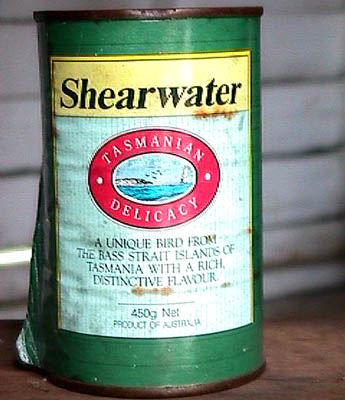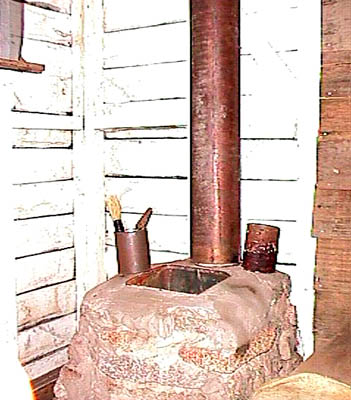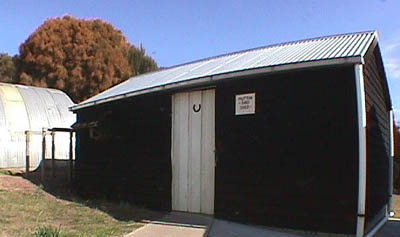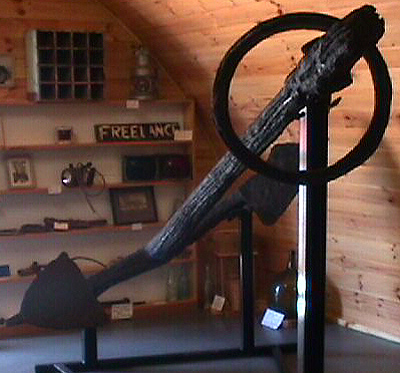Muttonbirds are Shortailed Shearwaters 'Puffinus Tenuirostris'. The Canning Factory began in 1912-1913 at Lady Barron, Flinders Island. The factory changed hands several times. The third owner canned mutton birds and also scaled fish and crayfish. This can of Shearwater may have been canned at that factory.
Furneaux Museum
The museum is a cluster of seven buildings which are themselves exhibits e.g.. One is 'Dryazell' (on its original site), one time private school and residence of first government subsidised teacher on Flinders Island. Another building is the replica of a Muttonbird processing shed as used 1920-1948. This shed contains original artefacts donated by Frank and Heather Willis whose family have been Muttonbirding for well over 100 years. Muttonbird harvesting is also a part of the culture of the indigenous people of the Furneaux. The museum is operated entirely by volunteer members of the Furneaux Historical Society
Items
Canned Food
Shearwater can

Scalding Pot
Muttonbird Scalding Pot

After plucking the Muttonbird it is passed to the scalding room. The bird is then dipped in the scalding pot and the fine down is removed by rubbing with a hessian bag. The tussock brush is used to remove the fine down floating on the surface of the water in the scalding pot. After 1948, scalding pots were gas fired. When square kerosene tins were no longer available, round ones were used as pots and are still in use to this day. In past years it was the practice for whole families to relocate to the outer Muttonbirding islands for the entire season. The schools on Flinders and Cape Barren Islands would close for the duration of the Muttonbirding season.
Replica Building
Mutton Bird Processing Shed

Harvesting of Mutton Birds began 1797 (or earlier) and practised by indigenous and non indigenous peoples of the Furneaux. Still practised in 2000. Only practised commercially by Indigenous people in 2000.
Anchor
G.N. Wolff Anchor

Vessel was wrecked on Prime Seal Island, 22 June 1912. The crew was rescued except for the Captain and taken to Melbourne by fishing boat 'Ada Burgess'. Anchor was recovered with help of RAAF using Chinook helicopter.
Anchor
Sydney Cove Anchor

Vessel was beached on Preservation Island. The cargo was off loaded to nearby Rum Island. Seventeen members of crew set off for Sydney to obtain help. Reference: Cargo for the Colony by Michael Nash 1996
